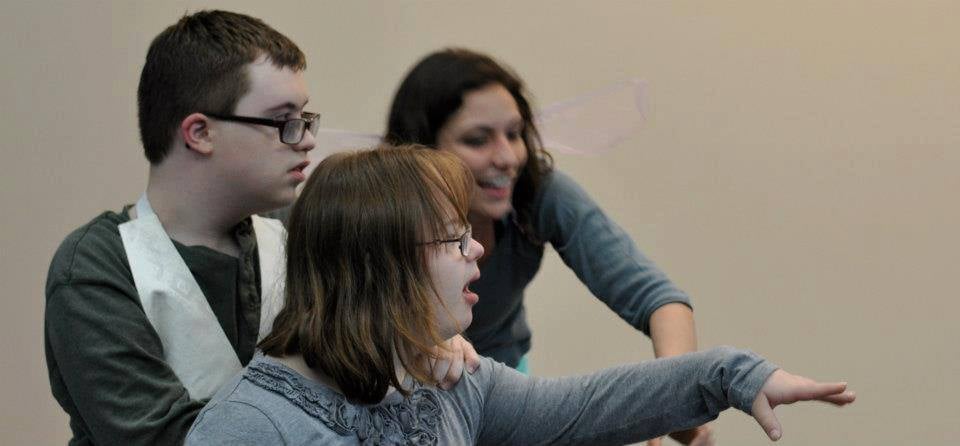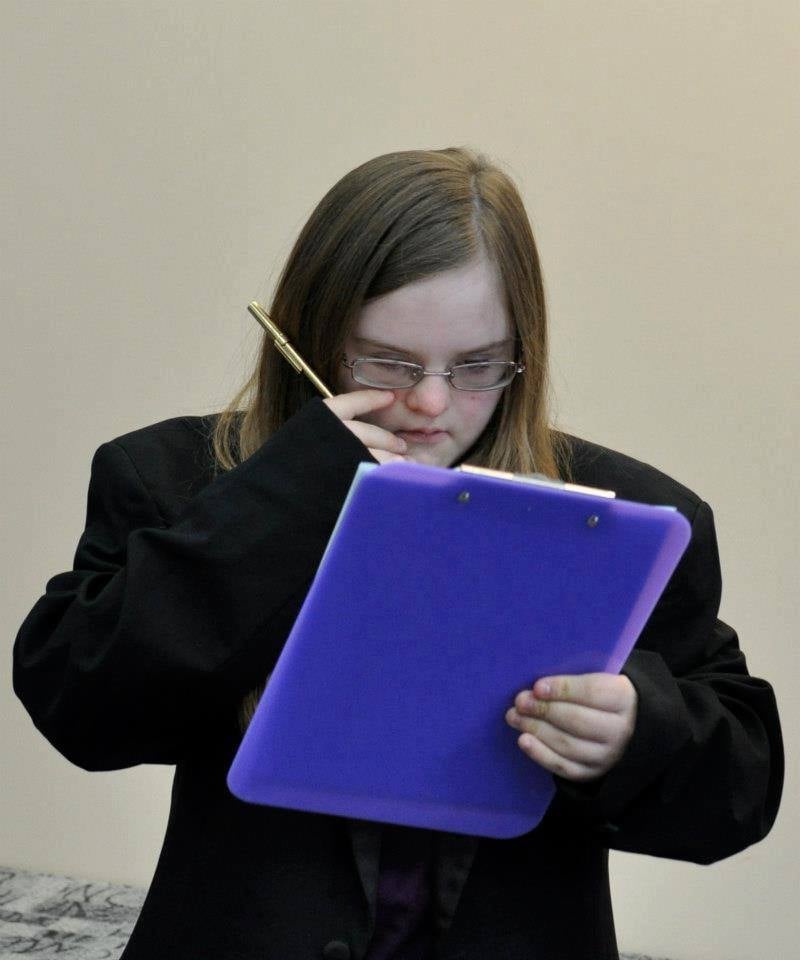For the past 2 weeks, ABLE founder and director Katie Yohe has been taking us through the ins and outs of adapting Shakespeare for the actors of the ABLE ensemble (if you missed them, click here to read part 1 here and click here to read part 2). In this 3rd and final installment, she explains the rehearsal and editing process that lead up to the big show!
“We will meete, and there we may rehearse
more obscenely and couragiously. Take paines,
Be perfect, adieu.”
REHEARSALS & Editing
Naturally, the most important part of the writing process, is editing, editing editing. After the initial draft is complete, our teaching artists help to tighten and make some initial changes, but really, we won't know what's going to work until we get into rehearsals with the ensemble.
Like all of our stage-ABLE courses, our Shakespeare semesters have ten 90-minute rehearsals and one 2-hour tech rehearsal before the final performance.
The first 2 weeks of class are all about characters. Most of Shakespeare's characters are easily classified by a clear archetype (Lover, Ruler, Jester, Warrior, Nymph, etc.). We teach the characters in groups so the actors see who goes together in the story. During this time, I can start to gauge which characters are the most appealing to the actors, and make sure there are enough scenes to go around.
Playing with different characters during rehearsals from A Midsummer Night's Dream (2012)
With the characters under our belt, weeks 3-6 focus on learning the story arc. As mentioned in Part 1's Blog, among the many activities we do in class, we use the script's narration for an exercise called "Play Plotting". Each actor is assigned a different character, and as a teaching artist reads out the narration, the actors mime the story and improvise lines. Hearing the narration read aloud, and seeing when the actors have questions, or when they zone out, all help to clarify how to tighten or clarify the narration.
"The Hounds" in rehearsal for The Tempest (2014)
About halfway through the semester, actors will audition for their favorite characters and let us know which parts of the story appeal to them. Maybe no one wanted to play Gonzalo. Maybe we discover EVERYONE wants to be Bottom. We can cut down or punch up a certain character’s presence accordingly.
Each actor is cast in at least 2 roles. Once we know who is playing who and in what scene, I can adapt the script to fit the strengths of these performers. Some may want longer speeches, some need shorter ones. We continue to refine the script during the final weeks of rehearsal as we block scenes and get a sense of how they're working up on their feet.
Our dedicated teaching staff meets after our last class to perfect and refine the script and ensure everything is perfect for the final performance.
Our last class of the semester is a rough dress rehearsal. Afterwards, all of the Teaching Artists and Facilitators go out for a working dinner; over our meal, we page through the script scene by scene and address any issues that came up during the run through. If an actor is having a lot of trouble delivering a particular line, we can change it. If there's a complicated bit of blocking, we might add some narration to help remind everyone what to do. If there is a difficult costume change happening backstage, maybe we need to add a longer speech or piece of narration to help build in some time.
costumes and props backstage and ready for The Tempest (2014)
The tech rehearsal in the theatre is one final chance to make sure everything is working well. Our staff will do a quick session of notes after the run-through to make sure everyone is comfortable and confidant and then the script is officially set in place for the final performance.




















